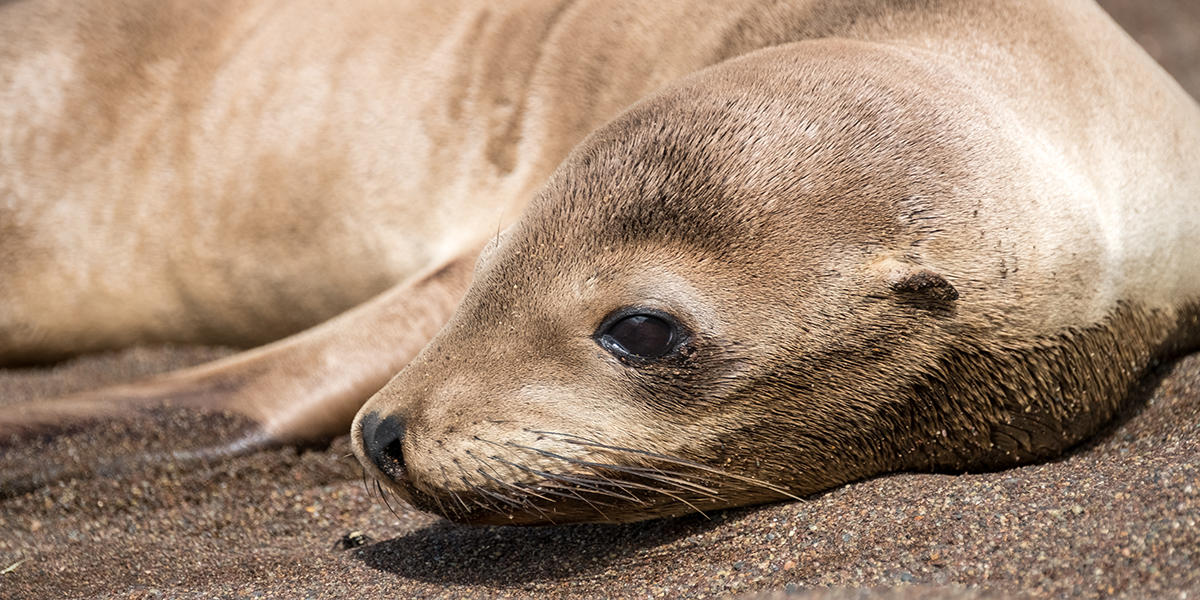Your parks need you now
Your support helps fight climate change and promote park sustainability—please give now.

Last year was a particularly rough one for pinnipeds (seals and sea lions). Underweight and malnourished California sea lion pups came ashore in search for food—one famously made it all the way up to Divisadero Street from the Bay in April 2015—and hundreds washed up on beaches suffering from maladies ranging from seizures to severe brain damage.
“2015 was one for the record books for The Marine Mammal Center (the Center),” notes Adam Ratner, guest experience manager at the Center, a park partner organization at Golden Gate that rescues and rehabilitates ill or abandoned marine mammals. “We rescued 1,800 total animals in just one year [an all-time-high record], which is three times our normal amount.”
The environmental conditions that made 2015 an outlier year for the Center aren’t showing signs of letting up in 2016. El Niño conditions, including warm ocean temperatures, are pushing pinniped prey (herring, anchovies) to deeper, colder waters. This is causing many seals and sea lions to dive to cooler depths or venture further out to sea in search of a meal—thus contributing to those exhausted pups coming ashore.
Rising Threat of Domoic Acid
Another threat was—and continues to be—rising levels of domoic acid, a neurotoxin produced by phytoplankton that bloom at a rampant pace in El Niño conditions.
“The way domoic [acid] gets through the food chain is that it starts at the plankton level,” Ratner explains. “And it can sometimes bloom, just like plants bloom, and can be [caused] by any number of factors, like warm water temperatures or fertilizer runoff. It’s the algae bloom that releases the toxin, and its accumulation magnifies as you go up the food chain.”
Once it builds up within California sea lions or Guadalupe fur seals, the domoic acid damages the hippocampus and the central nervous system. Acute cases cause disorientation, seizures (similar to the effect on a person with epilepsy), and dizziness. In severe cases, the hippocampus shrinks, causing permanent brain damage. Ratner says this can also affect the heart and cause the heartbeat to become fainter, which has a harmful effect on marine mammals.
It’s hard to identify and take steps to halt domoic acid absorption before it starts affecting marine mammals. Scientists only know if a seal or sea lion has absorbed the toxin if it is exhibiting unusual symptoms.
“We don’t see seizures [in seals or sea lions] very often with California sea lions or marine mammals, so that’s a sign that something is definitely wrong,” Ratner says.
Hot Spots and Other Afflicted Species
Of the 1,800 marine mammals rescued last year by the Center based at Fort Cronkhite, around 220 seals and sea lions were exhibiting signs of domoic acid intake. Ratner explains these animals come from a handful of spots along the California coastline, including the Santa Cruz, Monterey County, and San Luis Obispo areas.
“And those tend to be the areas where we see the most animal stranding, regardless of cause,” Ratner notes. “The sighting numbers could also be stronger in these areas as these regions tend to be more populated, and there might be more people out on those beaches.”
The Marine Mammal Center was the first to diagnose domoic acid in marine mammals back in 1998. Ratner says they tend to see more California sea lions affected (due to their greater overall numbers), but they also have found cases in Guadalupe fur seals.
As for the predators of pinnipeds (great white sharks and orcas), there are not enough observations to document domoic acid effects. However, they also have seen lower levels of the toxin in whales, dolphins, and otters.
“And we do see it in humans, as we do share some of the same diet as some of these animals,” Ratner says. (Effects on humans usually resemble the symptoms of shellfish poisoning.)
Canary in a Coal Mine
Afflicted pinnipeds act like a canary in a coal mine, warning of a possible outbreak for human populations.
“When we rescue seals and sea lions who have signs of domoic acid, we actually report that to the California Department of Public Health,” Ratner explains. “Then they test for the presence of domoic acid in those areas. That way, if they do identify it, they can close those fisheries to make sure that people don’t get sick.”
That would explain the Department of Public Health’s recent notice in November 2015 to refrain from eating any Dungeness crab caught along the California coast, from Oregon to Santa Barbara County.
Competing Forces of El Niño
As for the coming year, Ratner isn’t convinced that 2016 will top 2015 in regards to ill pinnipeds. According to Ratner, while warming waters help algae growth, El Niño also alters upwelling, a movement of the cold, nutrient-rich water, which can be churned and brought up to the surface.
“That [upwelling] would be the inverse of what domoic acid wants,” Ratner says. “So you have these two competing forces. One that could help domoic acid bloom, and one that would kind of hinder it. It’s hard to predict what could happen in the coming El Niño year.”
If you see a seal or sea lion that’s exhibiting unusual behavior, contact the Center’s hotline at (415) 289-SEAL (7325). You could help save a life of one of these key species in our local ecosystem.
Your support helps fight climate change and promote park sustainability—please give now.